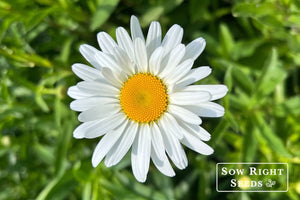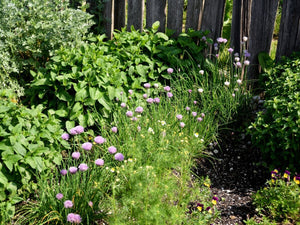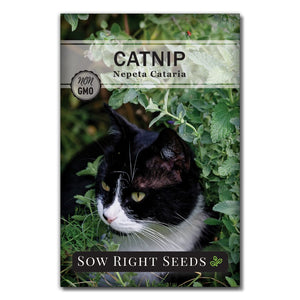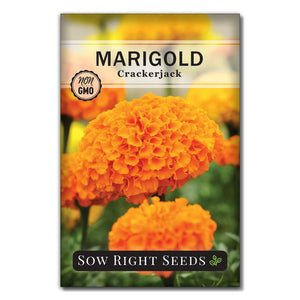Thrips on Plants - What You Can't See is Wreaking Havoc
PestsThrips are almost invisible invaders that go unnoticed until you see the results of their stealthy feast. These tiny bugs navigate into tight spaces and poke their straw-like mouths into tender leaves, stems, and flowers. While they suck away the nutritious sap, they spread disease and harm your plants. Because of their microscopic size, thrips go undetected until the damage appears. We’ll show you what to look for and give you methods to keep thrips from destroying your plants.

What Are Thrips?
With over 6,000 species, thrips are common throughout the world. Some species feed on a wide range of plants, while others target specific host plants. Their names often indicate which plants they attack, such as avocado, onion, and western flower thrips.
Thrips are minuscule, elusive insects that range in size from 0.5mm to 14mm. Adult thrips have a slender body with fringed wings. Immature thrips are larvae or nymphs and don’t have wings. They can range in color from black to dark brown, yellow to translucent, and some are even reddish.
Up close under a microscope, they may look scary, but they are too small to bite humans. (Pictures in this article have been greatly magnified.)They have two mandibles, and one is used to pierce plant tissue and suck up the plant nutrients. The damage to plant leaves can overwhelm small plants and cause stunted growth. Damage to flower buds will cause them to fall off before blooming.
Thrips Lifecycle
The female thrips cut a slit in a plant and deposit 25 to 80 eggs. These eggs hatch quickly, usually within five days. The nymphs are wingless and are heavy feeders for a week or two. They will then form a cocoon either on the plant or in the ground and emerge as adults, ready to eat again and lay eggs.
Life Cycle Stages of Thrips:
Overwinter: Both adults and larvae can overwinter in soil or plant debris.
Spring: When female thrips emerge in the spring, they lay eggs in plant tissue.
Hatching: Eggs hatch quickly from 1 to 5 days.
Development: It takes thrips 2 to 3 weeks to grow from larvae to adult.
Lifespan: The average thrips lifespan is 35 to 45 days.
Generations: Thrips can produce up to 15 generations each growing season.

How to Identify Thrips in Your Garden
Finding thrips on plants can be challenging due to their small size and their ability to hide in various nooks and crannies. Knowing where and what to look for is essential for early detection and control.
Look for Leaf Damage
Leaves that have been sucked on by thrips will show damage. Flower petals will have white spots, and leaves will have silvery streaks or spots. These discolorations are a result of the damaged cells that have had the juices sucked out. Thrips feeding can cause further problems, such as stunted plant growth or the spread of plant diseases like tomato spotted wilt virus. Spotted and deformed leaves, as well as damaged flowers and fruits, may all be signs of thrips activity.
Look for Thrips Waste
At first glance, dark spots on leaves can be mistaken for dirt. But it could be thrips poop. The thrips waste will be found alongside specific damage patterns on your plant—such as flecked, discolored, or silvery-speckled leaves.
Look for Thrips Movement
Most adult species of thrips aren’t great fliers. They typically jump and get blown with the wind. So you generally won’t see them buzzing around. To see them move, take a white piece of paper and shake the flower or leaf over it. Once they have landed on the paper, you can look at them through a magnifying glass to see if they are thrips.

How to Get Rid of Thrips on Plants
Inspect Carefully
Look closely at the undersides of leaves and within flower buds for any signs of their presence. If you are bringing in new plants, inspect them before placing them in your garden.
Wash Off Thrips
Sometimes, the simplest control method is the most effective. A forceful spray of water can wash the thrips off your plants. While this may not reach the deep crevices inside flower buds, it can help diminish the thrips population on leaves and stems. For indoor plants, you can place them outdoors or in the shower to spray them off.
Sticky Traps
Although using sticky traps may not be the most helpful method, they can trap thrips for identification. It is recommended to use blue sticky traps, as thrips are easier to see.
Mesh Row Covers
New plants are the most vulnerable to thrips. To keep thrips off, cover them with fine mesh cloth, which should still allow sunshine and airflow.
Maintain Healthy Plants
Healthy plants are better equipped to resist and recover from thrips damage. Ensure that your plant care routine includes proper watering and a balanced approach to fertilization, avoiding excessive nitrogen, which can exacerbate pest problems. Take care to remove spent blossoms, which could attract thrips. Prune off flowers and leaves that show signs of thrips damage and dispose of them far away from other plants.
Keep Your Garden Clean
Thrips thrive in environments where they can easily hide, so it is crucial to remove plant debris and old leaves, particularly dense ground cover like onion leaves, after harvest. Some weeds are host plants to thrips so removing weeds will help to keep your garden clean. A clean and tidy garden reduces the places for thrips to live and breed, interrupting their life cycle and keeping their populations in check.
Repel Thrips with Companion Plants
Certain plants can act as natural repellents for thrips. Interspersing vulnerable plants with strong-smelling herbs like garlic, basil, oregano, rosemary, and catnip can create an inhospitable environment for these pests. Not only do these herbs help deter thrips, but they also contribute to the biodiversity of your garden, which can encourage the presence of natural predators. Some plants are inherently more resistant to thrip attacks, so utilizing these in your landscape design is a smart choice. Effective pest management is often about creating a balanced ecosystem where potential pests are naturally kept at bay.
Avoid Pesticides
By the time you notice thrips' damage, they may be gone, so applying pesticides won’t do any good. Also, thrips can hide deep in tight spaces, making it difficult to get any pesticide on them. In the process of applying toxic pesticides, you’re just harming beneficial insects.

Thrips are common pests that can severely affect the health of outdoor and indoor plants. These minute insects, including species like the western flower thrips and onion thrips, are known to feed on plant tissue, causing visible damage such as distorted leaves and black spots. Thrips infestations can also spread plant diseases, and the lifecycle of female thrips ensures a rapid population increase if not controlled.
To manage thrips, gardeners can use sticky traps to monitor and reduce adult populations. A forceful spray of water can also dislodge thrips from the leaf surfaces. Companion plants can help repel thrips and encourage beneficial predators. Additionally, maintaining healthy plants and clearing plant debris can limit the presence of thrips.
For those struggling with thrips, it's important to remember that with persistence and the right strategies, you can protect your plants.










The tip about companion plants seems quite off, from my experience. Because the plants you name, are exactly the ones on my balcony that are always heavily infested with thrips. Basil, oregano, rosemary, thyme, mint and parsley. The thrips are all over them, year after year. They love herbs so much that they leave my other plants mostly alone.
Leave a comment